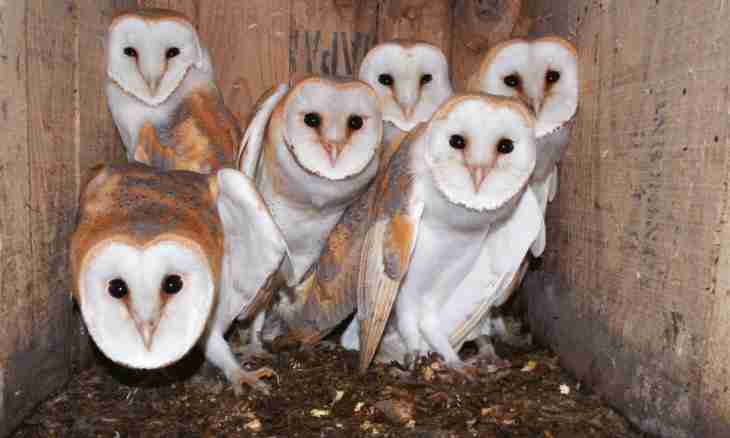It is known that at an owl good night sight. And here how well she hears and as hearing helps it to be guided, not all know. It appears, sensitive hearing for an owl - not less important ability, than good sight!
Owl: features of hunting
Owls and eagle owls - not the only birds, extracting to itself livelihood at night. At night ducks, goatsuckers, some sandpipers, and at each of these birds hunt, the mechanism allowing to find production in the dark, relying not only on sight, is debugged in own way. Ducks are helped, for example, by sense of smell, and an owl - delicate ear. Actually, if this bird on hunting relied mostly on sight, then she quite often would remain hungry - for example, in moonless or cloudy nights. In utter darkness nobody can see, even an owl.Experimentally proved: the owl will not manage to catch the production moving in the dark if does not hear a sound, characteristic of it. The mouse running in the dark room on the surface muffling steps will remain for a bird invisible. And here to look for livelihood, being guided only on a sound, the owl just can that is proved by survival cases in the nature of absolutely blind owls. Also exactly thanks to the sharpest hearing, the owl is capable to monitor unmistakably movement of mice under snow and it is easy to catch them. Why then the owl does not hunt in the afternoon, using the hearing? Actually this bird, contrary to popular belief, and sees not bad in the afternoon. Just at night she gains some advantage over the production which not so well is guided in the dark. Therefore in the afternoon the owl prefers to sleep off after "night shift" in some secluded corner where it will not be disturbed.
Differences of an auditory organ of an owlThe organ of hearing at an owl is unique. Anybody of other birds has no similar device. By means of skin folds around an acoustical opening of an owl the similarity of an auricle is formed, and feathers growing in a special way - create something like a loud-hailer. Besides the bunches of feathers reminding ears for which one of a kind of owls nicknamed "big-eared". there is just nothing. Hearing is increased by those feathers which surround "a front disk" of an owl. Thanks to features of arrangement of these feathers, the owl hears better those sounds which are distributed behind her. But it does not represent for her inconvenience as the owl is capable to turn the head practically by 180 degrees. One more feature of "ears" of an owl is their asymmetry. Axes of acoustical openings can be located under different corners and disperse diversely that allows an owl to catch location of a source of a sound more precisely. For this purpose owls so funny bow on one side, turning her under different corners. Besides, the delicate ear to an owl is provided by the increased eardrum which area is about 50 square millimeters. At chicken, for example, she is twice less. The eardrum of an owl also has camber in the form of a tent that enhances its sensitivity even more. But the external structure of organs of hearing - this is not all that makes an owl the ideal night hunter, even acoustical nerves at her are much more difficult arranged and better developed, than at other birds. So to the known metaphor "it is deaf as tererev" it is quite possible to oppose a phrase "hears how an owl". And here you should not envy owls in this plan: so delicate ear could cause to the person inconveniences. For a successful and rich life it is not obligatory for people to hear at all how mice under snow run!

